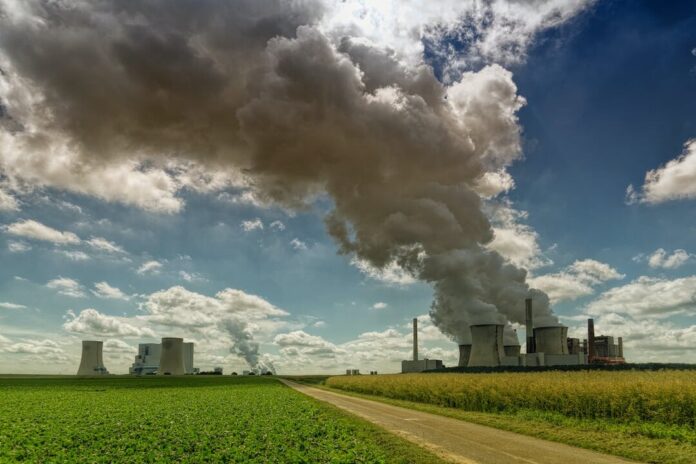Radioactive pollution, also known as radiological contamination, occurs when radioactive substances are released into the environment, contaminating air, water, and soil. This can happen through various means
That include such as:
A. ACCIDENTS AT NUCLEAR POWER PLANTS: Incidents like the Chernobyl disaster in 1986 and the Fukushima Daiichi nuclear disaster in 2011 have led to significant releases of radioactive materials into the surrounding environment. These incidents have had significant health, environmental, and socio-political impacts: Chernobyl Disaster (1986): This is perhaps the most infamous nuclear. accident, which occurred at the Chernobyl Nuclear Power Plant in Ukraine, then part of the USSR. A reactor explosion and fire released large quantities of radioactive particles into the atmosphere, which spread over much of the western USSR and Europe. The immediate aftermath saw the death of two plant workers, and over the subsequent weeks and years, many more succumbed to acute radiation sickness and increased cancer rates among the exposed populations.
In line, the Fukushima Daiichi Nuclear Disaster (2011): Following a massive earthquake and tsunami in Japan, the Fukushima Daiichi Nuclear Power Plant experienced a series of equipment failures, nuclear meltdowns, and releases of radioactive materials. It was the largest nuclear disaster since Chernobyl and led to significant releases of radioactive materials into the surrounding area and the Pacific Ocean, prompting widespread evacuations and long-term environmental concerns.
B. NUCLEAR WEAPONS TESTING AND USE: The detonation of nuclear weapons, whether for testing purposes or in warfare, releases large amounts of radioactive materials into the atmosphere, which can spread over vast areas.
C. IMPROPER WASTE DISPOSAL: The disposal of radioactive waste from nuclear power plants, medical, industrial, and research facilities, if not managed properly, can lead to environmental contamination.
D. MINING AND REFINING OF RADIOACTIVE ORES: The extraction and processing of uranium and other radioactive ores can release radioactive dust and radon gas, contributing to environmental pollution.
E. NATURALLY OCCURRING RADIOACTIVE MATERIALS (NORM): Certain materials in the Earth’s crust contain naturally occurring radioactive elements. When these materials are disturbed through activities such as fracking or mining, and can release radioactive substances. Radioactive pollution poses significant health risks to humans and wildlife because exposure to high levels of radiation can cause cell damage, leading to cancer, genetic mutations, and acute health effects such as radiation sickness.
The factors contributing to radioactive pollution can be broadly categorized into human-made sources and natural sources:
A. HUMAN-MADE SOURCES: Nuclear Power Plants: Accidents or leaks from nuclear power plants, such as the Chernobyl disaster in 1986 and the Fukushima Daiichi nuclear disaster in 2011, are significant sources of radioactive pollution.
MEDICAL FACILITIES: Radioactive materials are used in various medical applications, including diagnosis and treatment. Improper disposal of these materials can lead to environmental contamination.
INDUSTRIAL USES: Certain industries use radioactive materials for processes such as radiography, which is used to inspect metal structures and welds. Mishandling or improper disposal of these materials can contribute to pollution.
RADIOACTIVE WASTE DISPOSAL: The disposal of radioactive waste from nuclear reactors, research institutions, and hospitals, if not managed properly, can lead to environmental contamination. This includes both low-level waste (such as contaminated clothing and tools) and high-level waste (such as spent nuclear fuel).
B. NATURAL SOURCES: RADON GAS: Radon is a naturally occurring radioactive gas that is released from the Earth’s crust. It can accumulate in buildings, especially in basements and ground floors, leading to indoor radioactive pollution.
COSMIC RADIATION: The Earth is constantly bombarded with cosmic rays from outer space, which are partially absorbed by the atmosphere but can contribute to background radiation levels.
TERRESTRIAL RADIATION: Rocks and soil contain naturally occurring radioactive materials like uranium, thorium, and potassium-40. These contribute to background radiation and can be released into the environment through natural processes or human activities such as mining.
NATURAL DISASTERS: Events like volcanic eruptions can release naturally occurring radioactive materials into the atmosphere, contributing to environmental contamination. Both human-made and natural sources of radioactive pollution have the potential to impact human health and the environment. The extent of the impact often depends on the level of radiation released, the type of radioactive material, and the duration of exposure. Effective regulation, proper waste management, and safety protocols are essential in minimizing the risk of radioactive pollution from human-made sources.
Sharing information, technology, and best practices between countries and organizations can enhance global capacity to prevent, manage, and remediate radioactive pollution as it requires a multi-faceted approach that involves government agencies, industry stakeholders, scientists, and the public.
Dealimg with radioactive pollution involves a combination of prevention, containment, decontamination, and long-term management strategies aimed to minimize exposure to radiation, prevent the spread of radioactive contaminants, and ensure the safe disposal of radioactive waste.
A. PREVENTION AND CONTAINMENT: Strict Regulatory Frameworks: Implementing and enforcing strict regulations for nuclear power plants, medical facilities, industrial applications, and waste management can prevent accidental releases of radioactive materials.
SAFETY PROTOCOLS AND TRAINING: Ensuring that all personnel handling radioactive materials are properly trained in safety protocols can significantly reduce the risk of accidental pollution.
SECURE CONTAINMENT OF RADIOACTIVE WASTE: Radioactive waste should be securely contained and isolated from the environment. This includes using appropriate shielding materials and constructing deep geological repositories for long-term storage of high-level waste.
REGULAR MAINTENANCE AND INSPECTION: Regular maintenance and inspection of nuclear facilities and equipment used to handle radioactive materials can help identify and rectify potential sources of leaks or accidents before they occur.
B. DECONTAMINATION AND REMEDIATION: Soil and Water Remediation: Techniques such as soil washing, in-situ vitrification and the use of absorbents can help remove radioactive contaminants from soil and water.
BIOREMEDIATION: Certain microorganisms and plants can absorb and concentrate radioactive elements from the environment, a process known as phytoremediation for plants. These organisms can then be safely harvested and disposed of as radioactive waste.
PHYSICAL AND CHEMICAL TREATMENT: Contaminated materials can be treated physically or chemically to remove or stabilize radioactive contaminants. For example, ion exchange, precipitation, and filtration methods can be used to treat contaminated water.
SECURE DISPOSAL OF CONTAMINATED MATERIALS: Materials that cannot be decontaminated must be securely disposed of as radioactive waste, ensuring they do not pose a risk to human health or the environment.
C. LONG-TERM MANAGEMENT AND MONITORING: Environmental Monitoring: Continuous monitoring of air, water, and soil in and around nuclear facilities and waste disposal sites helps in early detection of radioactive leaks and contamination. Public Health Monitoring: Monitoring the health of populations exposed to radioactive pollution can help in early detection of radiation-related illnesses and guide public health interventions
RESEARCH AND DEVELOPMENT: Investing in research to develop more effective decontamination technologies and safer nuclear energy technologies can help reduce the risk and impact of radioactive pollution.
INTERNATIONAL COOPERATION: Sharing information, technology, and best practices between countries and organizations can enhance global capacity to prevent, manage, and remediate radioactive pollution as it requires a multi-faceted approach that involves government agencies, industry stakeholders, scientists, and the public.























